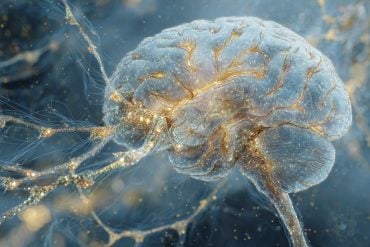Summary: Researchers discovered that female mice gain access to aggression after giving birth through a brain circuit usually dormant in non-pregnant females. The same neurons drive aggression in males but only switch on in mothers, activated by oxytocin and prolactin.
Silencing these neurons stopped mothers from defending against cage intruders. The findings highlight how the brain can unlock new behaviors for survival during specific life stages.
Key Facts
- Dormant Circuit: Aggression neurons in female mice lie inactive until triggered by motherhood.
- Hormone Activation: Oxytocin and prolactin switch on this system, enabling maternal defense.
- Brain Flexibility: Findings suggest a general principle of the brain’s ability to access new behaviors when needed.
Source: Stockholm University
Researchers at Stockholm University and Karolinska Institutet have found a system in the brain that can explain why female mice, who are not normally aggressive, suddenly and dramatically gain access to this behaviour after becoming pregnant and giving birth (so-called maternal aggression).
The study shows that a group of neurons that control aggression in the normally aggressive males are turned off in the non-pregnant female, but switch to active mode when she becomes a mother.
When the researchers silenced the neurons, the mother stopped attacking cage intruders.
The study also shows that oxytocin and prolactin, the hormones that control maternal bodily functions such as lactation, can powerfully activate these neurons.
The study was conducted on animals, and should be interpreted with caution in a human context. But the findings touch on a larger conceptual question: How can an individual gain access to a behaviour that is outside their normal repertoire, during a limited phase of their life?
The example studied here, with a brain circuit that can be turned on and off depending on whether an animal needs access to certain behaviour (regardless of sex) for its (or its offspring’s) survival, may have general significance for how the plastic brain functions also in humans.
“Surprisingly, it turned out that the same network of cells that drive aggression in male mice lies dormant in females – until motherhood flips the switch of this hormone-sensitive system,” says the article’s first author Stefanos Stagkourakis, who now leads his own research group at SciLifeLab and Karolinska Institutet.
“This is a study on laboratory mice, and we do not currently know whether the results can be transferred to humans. But the mechanism that we identify here how a behaviour that is normally outside an individual’s repertoire can become available for a limited period of its life – may reflect a principle of brain flexibility with relevance beyond maternal aggression,” says Christian Broberger, professor of neurochemistry at Stockholm University.
The study was conducted under the leadership of Christian Broberger, Professor of Neurochemistry at Stockholm University. The experiments were carried out at Karolinska Institutet, where his laboratory was previously located.
Key Questions Answered:
A: They found that normally inactive aggression neurons in female mice switch on during motherhood, enabling protective aggression.
A: Oxytocin and prolactin, hormones central to maternal functions like lactation, strongly activated the aggression-related neurons.
A: It suggests a broader principle of brain flexibility—behaviors outside one’s typical repertoire can become accessible when survival demands it.
About this maternal aggression and neuroscience research news
Author: Per Larsson
Source: Stockholm University
Contact: Per Larsson – Stockholm University
Image: The image is credited to Neuroscience News
Original Research: Open access.
“Maternal aggression driven by the transient mobilisation of a dormant hormone-sensitive circuit” by Stefanos Stagkourakis et al. Nature Communications
Abstract
Maternal aggression driven by the transient mobilisation of a dormant hormone-sensitive circuit
Aggression is a sexually dimorphic behaviour. In some species, including the laboratory mouse, it is robustly expressed in males – while females are not aggressive in the non-puerperal state.
However, during nursing, females exhibit maternal aggression, a dramatic yet transient shift in their social behaviour repertoire.
This phenotypic change occurring in adulthood presents an opportunity to investigate whether sex-biased behavioural programs depend on mono- or di-morphic neural circuits.
While maternal hormones are known to elicit nursing, their role in maternal aggression, particularly regarding target sites and cellular mechanisms, remains unclear.
Here, we show that a molecularly defined subset of mouse ventral premammillary (PMvDAT) neurons – with an established role in intermale aggression– transitions from quiescence to a hyperexcitable state during female lactation.
The maternal hormones, prolactin and oxytocin, were found to excite these cells through pre- and post-synaptic electrophysiological actions.
Gain- and loss-of-function experiments related to PMvDAT neuron activity bidirectionally influence maternal aggression, while PMvDAT neuron activation suppressed the expression of a competing social behaviour.
This study identifies a sexually monomorphic neural substrate in mice capable of integrating hormonal cues, providing a likely mechanism that enables the transient access to a dormant behavioural program.







